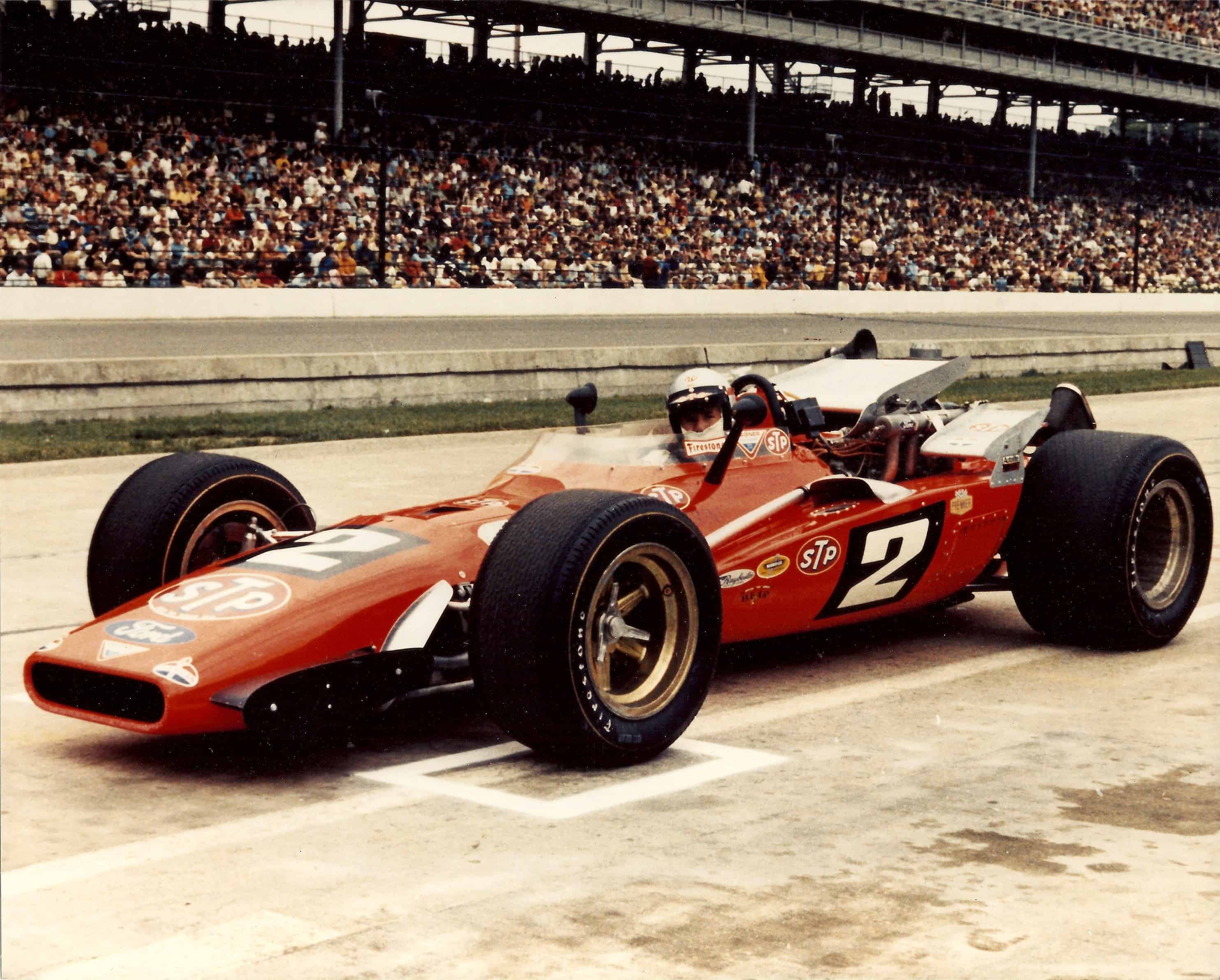
The engine provided by Chrysler-Plymouth was a dry-sump version of their 318 ci V8 unit using components developed for stock car racing. Licenced by The Henry Ford under Creative Commons licence Attribution-NonCommercial-NoDerivs 2.0 Generic. The Plymouth 318 ci V8 engine in the STP #20 at the 1969 Indy 500. Although mention was made of the monocoques being fabricated using the products of the Harvey Aluminum Company, Lotus historian Michael Oliver is of the opinion that the two cars used existing Lotus 56 tubs, which were later restored by Vince Granatelli to Lotus 56 specification, which would explain why neither of the 1969 STP Specials exists today. They were to have a particularly dramatic "super wedge" shape, designed for Granatelli by Gene Winfield, a styling consultant at AMT in Santa Monica, whose usual work was designing cars for TV shows. The deal was done in January, and as Granatelli and Lotus boss Colin Chapman negotiated a continuation of their contractual relationship for 1969, Vince Granatelli started the construction of two "new" cars at STP's workshops in Santa Monica, California. Plymouth had lost their leading stock car driver to Ford, and had needed a new way to promote their product, so supplying engines to the highest-profile Indy team must have seemed a good idea. With the turbine engines that had powered the STP-Lotus 56s in 1968 now effectively outlawed, STP chief executive Andy Granatelli initiated two projects for 1969, one a continuation of his relationship with Lotus but now using Ford engines in new four-wheel-drive Lotuses, and another with Chrysler-Plymouth to use the company's stock block engine in new STP-built cars. Original image has been cropped.Īndy Granatelli commissioned the construction of two STP Indy cars for 1969, using Lotus 56 monocoques with "Superwedge" bodywork and fitted with Plymouth stock block engines.


Art Pollard in the STP-Plymouth in practice for the 1969 Indy 500.


 0 kommentar(er)
0 kommentar(er)
